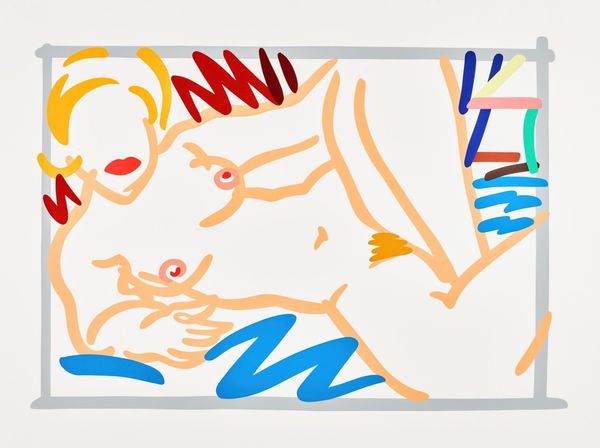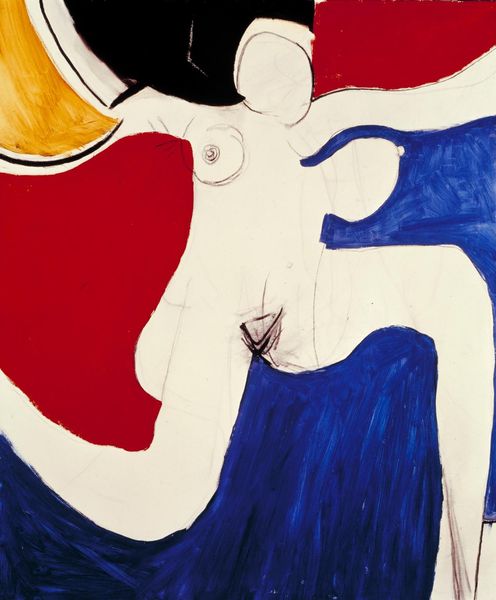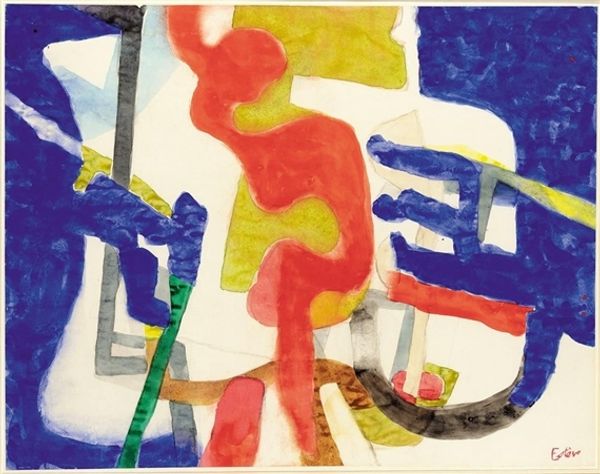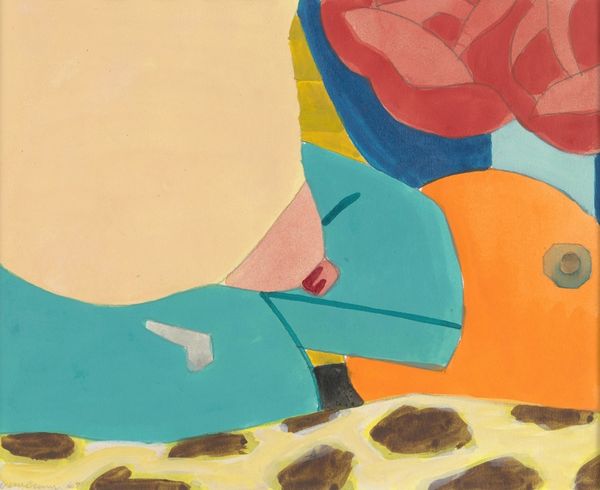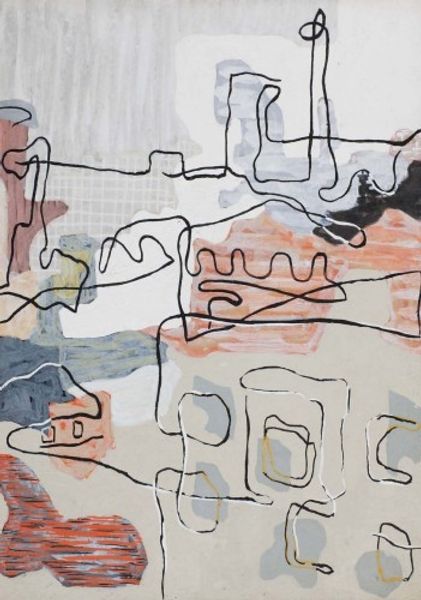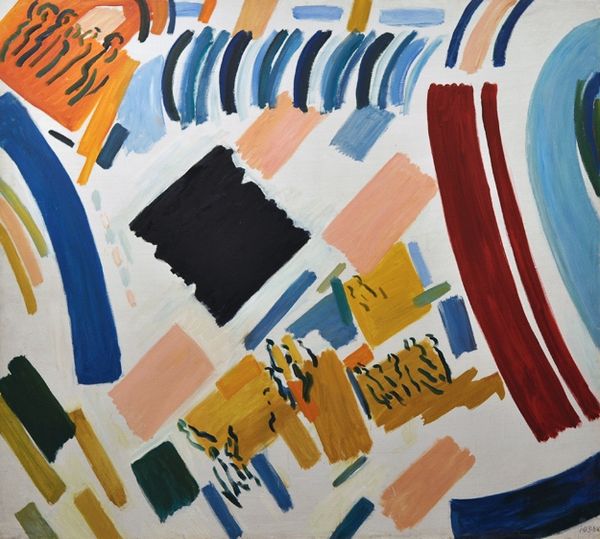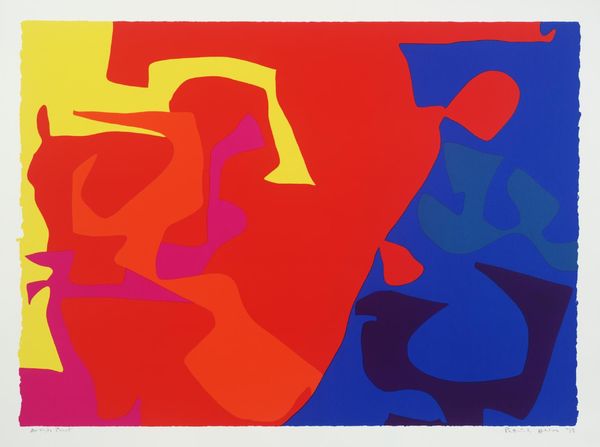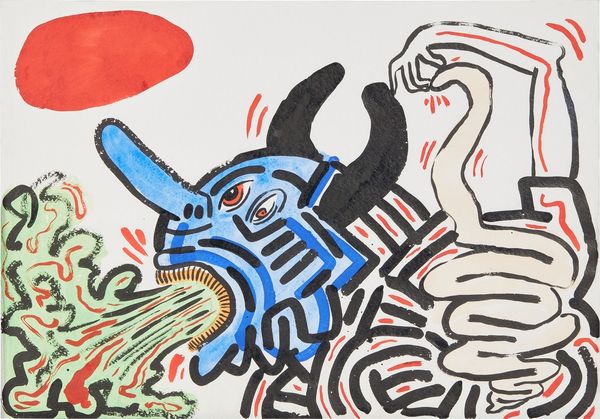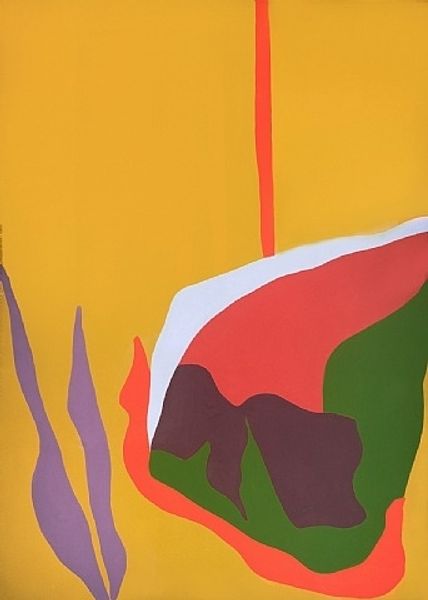
Copyright: Modern Artists: Artvee
Curator: Looking at Tom Wesselmann’s “Curled Up Blue Nude,” completed in 2001 with acrylic paint, my initial reaction is its surprising simplicity—the use of flat planes of color and the thick, cartoonish outlines almost belie the complexity of the pose. Editor: It's a stark visual language isn’t it? Very consciously playing with the commercialized image of the female form that was pervasive in advertising. One can certainly say it’s quite detached. I wonder, can such representation ever be truly empowering, or is it inherently a reflection of a patriarchal gaze, further objectifying the female body? Curator: Right, Wesselmann, known for his pop art, draws heavily from advertising imagery and the representation of women within those structures. The deliberate simplification and the blue pigmentation on the subject removes an individual identity. And here he further flattens form; the figure almost dissolves into the background patterns. It begs the question: is this a celebration or a critique? What is the context within which this piece appeared? Editor: And we cannot ignore the implications of that bold outline – tracing, framing and even dictating how we consume and even think about women’s bodies! But it is acrylics. Wesselmann and others embraced mass production and the commodification of material itself – challenging that division between "high" art and popular culture. I see Wesselmann as a conscious participant in the evolving dialogue surrounding consumerism and art. Curator: Absolutely, and the choice of acrylic certainly speaks to a kind of modern accessibility. The way he flattens and distorts the female nude invites a crucial look at beauty standards and desire within art history. Editor: Perhaps a provocative statement using accessible, industrially created materials? Almost mirroring its commercial intent through material processes! Curator: It definitely sparks discussions regarding gender representation, objectification, and the commercial influence on art, doesn’t it? Editor: I come away reminded that materiality matters, especially when engaging with such loaded imagery, as do issues of mass-production when creating art.
Comments
No comments
Be the first to comment and join the conversation on the ultimate creative platform.
